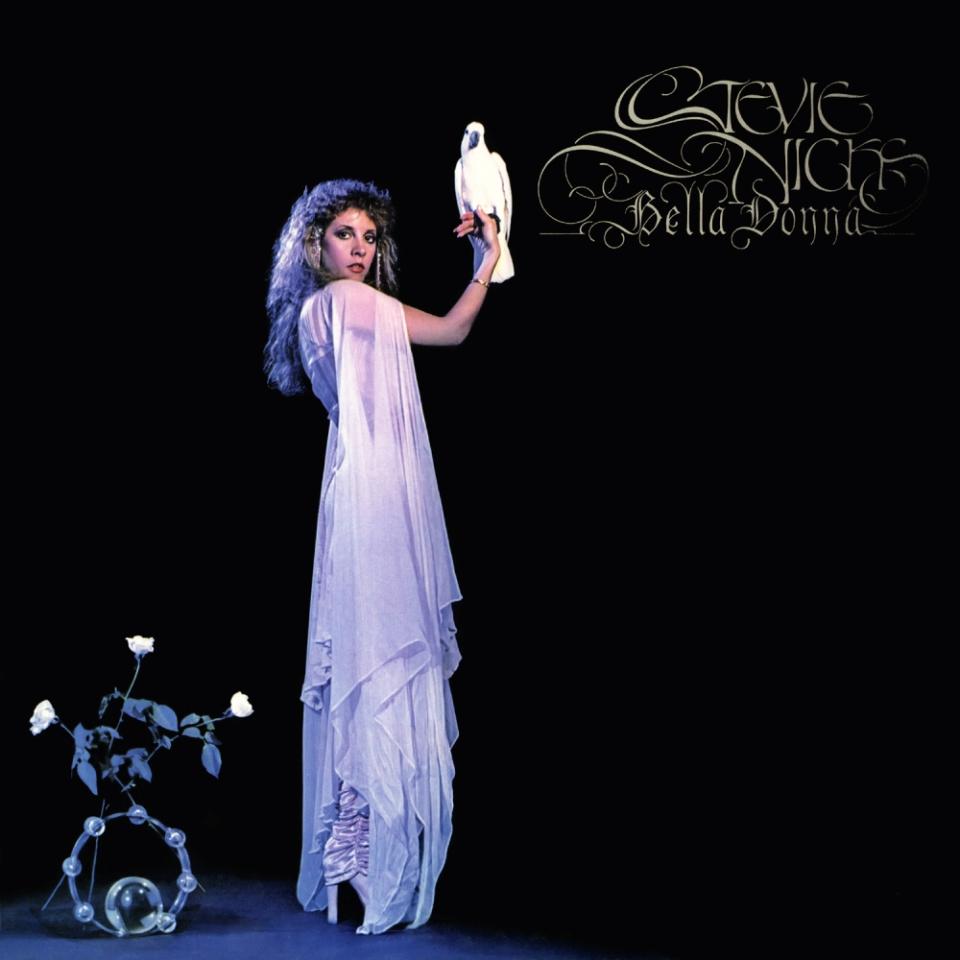Why Stevie Nicks’ solo debut, “Bella Donna” still matters to me — and to music — today
Why Stevie Nicks’ solo debut, “Bella Donna” still matters to me — and to music — today
Comfort kills careers; the working man adage even applies to shawl twirling seraphs like Stevie Nicks.
In 1981, as Fleetwood Mac recovered from a failed album, Tusk, and toyed with respective solo projects, feather-haired, lace-yoked Stevie Nicks was conjuring up what she expected to be her first and last solo effort. Bristling with country-tinged melodies, lush pop arrangements, and her now-trademark mysticism, Stevie Nicks’ Bella Donna was a grand entrance by an artist who needed no introduction.
“I can sit and look at my album for the rest of my life and say ‘Here it is. I did it. And whatever that had to go before is all right, because I did this,’” Nicks said in an interview with Canadian Television in 1981.
Truer words couldn’t have been spoken — 35 years and seven solo albums later, Bella Donna endures as Nicks’ legacy piece, for herself, for me, for flocks of women who can only dream of living in a world as magical as the one that exists within Bella Donna.
The day I stumbled upon the album, I was barely as tall as a doorknob, thumbing through my parents’ musty record collection. When I slid some love-worn record out of its resting place to reveal a heliotropic cover, a batty-eyed beatnik, and her fowl friend, I knew that I had discovered something I had waited my whole life for.
I’m sure that Stevie Nicks was gnarled by the same air of anticipation while creating the album. With her Fleetwood Mac songwriting credits teetering around 50 percent per album, critics and fans alike were unsure if she possessed the brio and musicality to carry an album without her Fleetwood Mac bandmates. Would she harness the hushed vulnerability “Sara”? Can the bedroom eye allure of “Gypsy” be recreated?
The brazen piano chords and dense harmonies that crowd Bella Donna‘s first ten seconds laid all doubts to rest, and it left me spellbound as a child.
The album’s title track, a dulcet tale of Nicks seeking stability amidst the cocaine haze and bright lights of fame, became a scarf twirling ballad for woolgathering young’uns across the world. Years after its release, I was one of them — head in the clouds and hand in lace glove.
Critics were just as blindsided by the jubilant debut, as well. It was a 42-minute LP that would top U.S. charts, churn out four Top 40 singles, and climb to the Top 20 in six other nations.
One of Bella Donna’s many musical triumphs is its star-studded crew of cohorts that helped Nicks bring her crystal visions to life. She enlisted friends like Tom Petty and Roy Bittan of the E Street Band to help build the foundation of her gypsy fight songs.
Nicks became a conductor rather than a collaborator. She made it feasible for female artists to consult male counterparts without losing ownership over her work, or herself.
The lore backing Nicks’ bohemian persona bewitched my father, who told me the “Lindsey and Stevie Love Saga” as he nimbly jogged on the treadmill in our basement gym — which, of course, was blaring Rumours — one of Fleetwood Mac’s greatest albums. But it was Nicks’ splashy approach to pop music that made me a lifelong fan.
“Think About It,” one of the tracks, is crowded with harmonies and maudlin proclamations of love, a theme that peaks with the shameless balladry of “After The Glitter Fades,” and Nicks only wades in Fleetwood Mac tropes ever so briefly — a brisk backbeat here, a groovy organ accompaniment there.
The true anchor of Bella Donna, though, is the spine slinging hit “Edge of Seventeen.” Thumping at a mile a minute, the track revitalizes the otherwise willowy LP by channeling Nicks’ cocaine mania and budding showmanship.
Nearly 30 years after Bella Donna, Nicks released a commentated live performance of showstopper single “Edge of Seventeen” from the album’s tour.
As the minutes dwindle and intensity mounts, Nicks’ divine facade is cracked by tears shed not for her admiring fans, but for her independence — as she was returning to work with Fleetwood Mac and thought it may likely be the last night of her solo career.
Bella Donna was much more than a proof of concept for Nicks’ solo career. It was a woman expunging the foothold of her past and building a new identity in front of the world — a seemingly ludicrous task for many women, even today.
In 1981, everyone knew that Nicks was one in a million. On Bella Donna, she finally believes it, too.
The post Why Stevie Nicks’ solo debut, “Bella Donna” still matters to me — and to music — today appeared first on HelloGiggles.





